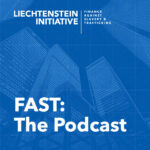Finance Against Slavery and Trafficking (FAST) is a global public-private partnership mobilizing the financial sector to fight modern slavery and human trafficking. The FAST Blueprint (September 2019) sets out five Goals and thirty Actions for financial sector actors to address modern slavery and human trafficking. This Insight focuses on the implications of the FAST Blueprint for development finance institutions, especially under FAST Goal 5.
When one person enslaves another, they deny their economic agency and prevent them from exercising outside labour options. Slavery also often involves control of consumption, savings and investment choices. This denial of agency ripples through the economy, leaving everyone worse off in ten ways:
- Slavery reduces productivity. It demotivates workers, and leads to inefficient labour allocation. This pushes capital towards rentier sectors, reducing overall economic productivity.
- Slavery creates inter-generational poverty. The negative health, human capital formation (education) and income impacts of slavery spill over to victims’ families and communities. They are transmitted through generations.
- Slavery institutionalizes inequality. Rent-takers use their profits to entrench their power and institutionalize structural inequality. Addressing this later can be very expensive: it cost the UK a payment of 5 per cent of GDP, paid off over 180 years, to buy out British slavers in the 1830s.
- Slavery weakens multiplier effects. Slaves lose control of their consumption, savings and investment choices, reducing economic multipliers. So emancipation leads to growth.
- Slavery discourages innovation in production. It demotivates both workers and exploiters to innovate, making slavery-dependent industry inefficient, uncompetitive and unsustainable.
- Slavery produces a capital market failure. Capital markets tilt unfairly towards firms whose low costs rely on illegal labour practices. This is anti-competitive and inefficient.
- Slavery hits the public purse. It reduces income and consumption tax receipts, and increases direct expenses to the public budget. UK Home Office researchers estimated domestic costs from modern slavery at GBP 3.3 to 4.3 billion per year.
- Slavery weakens governance. It corrodes trust, increases social stratification, ethnic fractionalization, violence and conflict. It impedes state formation and investment in public good.
- Slavery fuels corruption and illicit financial flows. Slavers bribe and corrupt officials to protect the slavery system, further weakening governance. Exploitation of migrant workers may in some cases be an illicit transnational financial flow.
- Slavery harms the environment. Slavery rests on illegal management practices that often also disregard environmental protections. It coincides with deforestation, illegal and over-fishing, unsustainable agricultural practices, and negative impacts on biodiversity and carbon capture.


